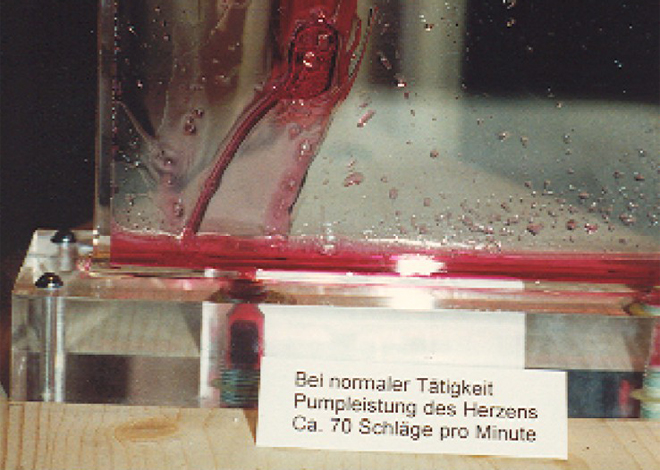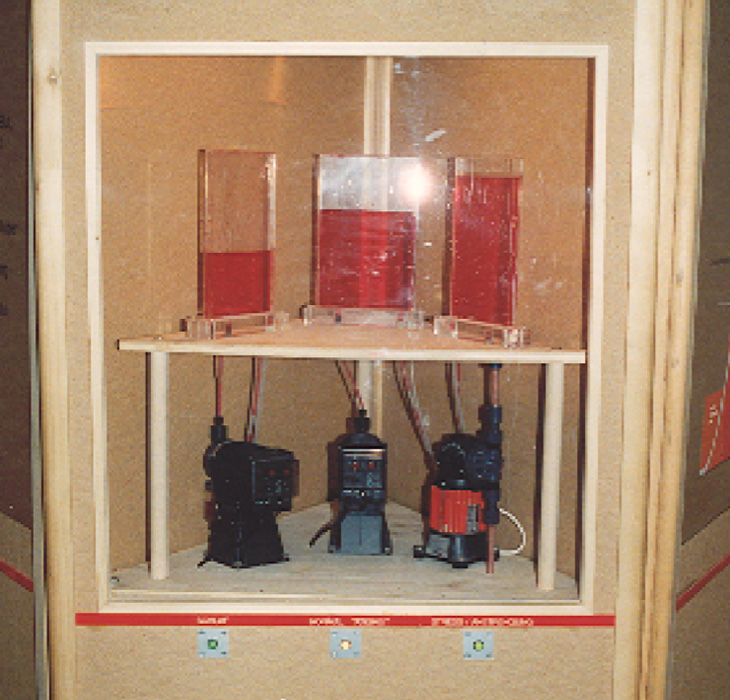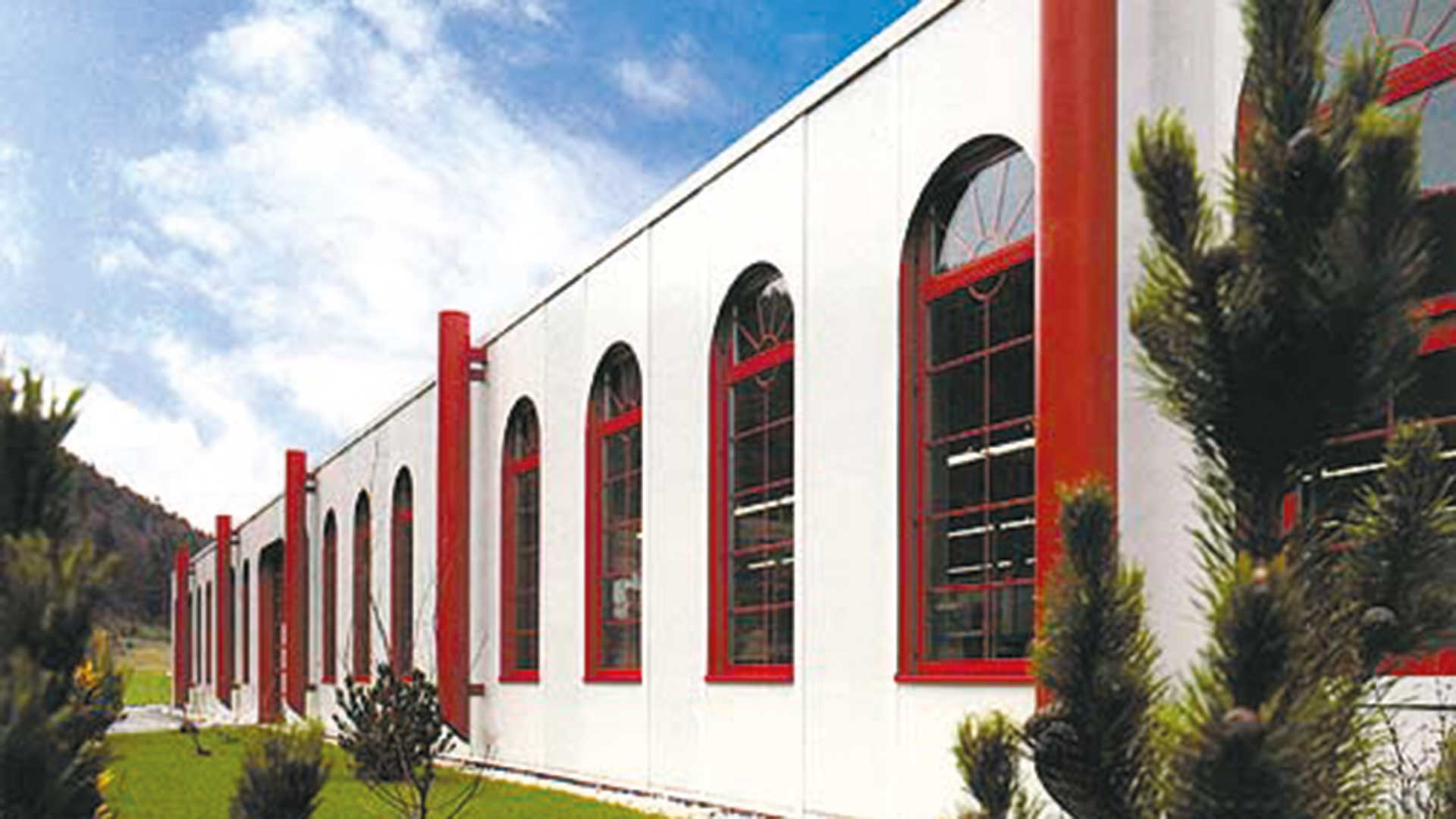
The challenge: performing the precise dosing of artificial blood
Answers to these exciting questions can be found at the Natural History Museum Vienna. The museum worked to develop an interactive heart simulation that allows visitors to observe different phases of the heartbeat in real time and thereby understand the effects on blood flow.
Looking to produce a precise and realistic presentation, the technicians needed pumps that could work precisely to dose artificial blood at different heart rates and generate a rhythmic sound. With Lutz-Jesco, they found what they were looking for.
Solution: dosing pumps from the Magdos and Minidos A24 series ensure precise delivery of the artificial blood
The system engineers opted for pumps from the Magdos series to simulate a resting pulse of 50 beats per minute and a normal pulse of 70 beats per minute. The pumps are based on magnetic drive technology and dose liquids precisely without the need for a direct mechanical connection between the motor and the dosing mechanism.
By alternating pressure and release, the pumps generate a rhythmic, pulsating click, which is ideal for simulating the human heartbeat in the museum at rest and in the normal range.
For the simulation of the stress pulse with 140 beats per minute, however, the system engineers opted for the Minidos A24 - a compact, motor-driven diaphragm dosing pump. The diaphragm technology generates a pulsating delivery movement and ensures high precision and consistent performance, which is important for simulating a heartbeat with consistent frequency and volume. Fluctuations in rhythm would be undesirable in such a simulation.

Visitors activate the dosing pumps in the interactive installation at the touch of a button
This is how the installation at the Natural History Museum in Vienna works: three dosing pumps are placed behind a glass pane in a wooden display case . They are connected via supply and discharge hoses to three narrow acrylic containers, which stand on a support surface above the pumps.
Three push buttons are mounted on the outside of the display case in front of each dosing pump, which activate the pumps. They pump a red, blood-like liquid into the containers - at 50, 70 or 140 pulsations per minute. Thanks to this direct comparison, visitors can see how the blood flow changes as the heart rate increases. The interactive installation vividly combines technology with medical knowledge and invites visitors to experiment.
Customer benefits
Precise heartbeat simulation:
The Magdos and Minidos A24 dosing pumps make it possible to simulate different heart rates - from resting pulse to stress pulse.
Durable and reliable technology:
solenoid and diaphragm drive technology ensures precise and consistent dosing without mechanical wear.
Interactive visualisation:
visitors can control the blood flow at the touch of a button and experience the effects of different heart rates in real time.
info@lutz-jesco.ch







